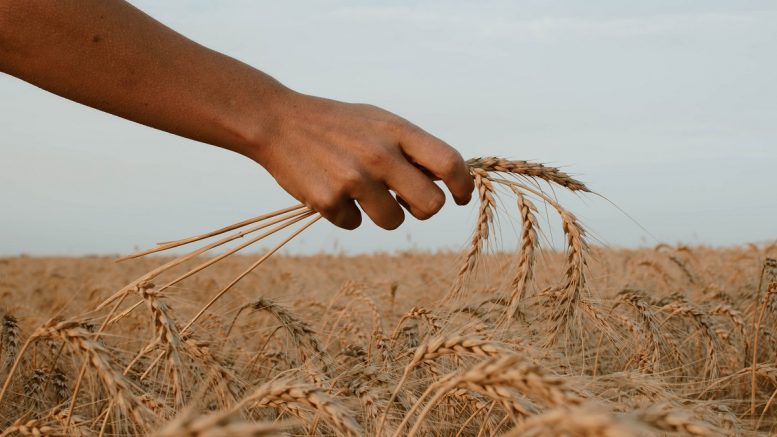For non-profits, government agencies and businesses battling food insecurity, data may be one of the most valuable tools available.
Even before the pandemic, food insecurity affected more than 2 billion people around the world. COVID-19’s impact on global food production and supply chains likely made the problem more severe.
Now, a variety of organizations are using new data analytics techniques to optimize agriculture and food logistics so that food insecurity may become a thing of the past.
How Food Insecurity Starts in the Supply Chain
Despite advances in agriculture and food logistics, food insecurity is a major problem both globally and in the United States.
According to data from the USDA, around 38.3 million people lived in food-insecure households in 2020 — and 15% of households with children faced food insecurity.
The impacts of food insecurity can be severe, especially for children. Researchers have correlated food insecurity with a variety of poor health outcomes, including obesity, chronic disease and various mental health conditions, including depression and anxiety.
In America, the agricultural sector produces enough food to safely meet demand, as well as the demand of consumers and businesses outside the U.S.
Much of it goes to waste, however, with between 30 and 40% of the entire U.S. food supply wasted every year. A portion of this loss happens in the homes of consumers. A much larger share of food waste occurs in the supply chain, due to inefficiencies, shipping errors and changing market conditions.
For example, in the early days of the COVID-19 pandemic, as hotels, restaurants and schools closed around the country, farmers dumped thousands of gallons of milk and buried millions of pounds of vegetables. These farmers were struggling to find customers for their produce, despite fears that the COVID-19 pandemic would worsen existing food insecurity.
The food supply chain wasn’t flexible and responsive enough to quickly redirect products like dairy and vegetables — which have short shelf lives compared to many other products and require special storage conditions — to meet changing demand.
Using Data to Optimize the Food Supply Chain
The agricultural sector, like many other industries, is currently undergoing a digital transformation. A massive number of farmers and agriculture sector businesses are migrating data to the cloud, where it’s more accessible than it’s ever been before. It’s possible for these businesses and their partners to use this data to transform how the industry operates and delivers its products to customers.
Data analysis can enable forms of agriculture and supply chain management that help farmers and logistics workers avoid these problems in the future — ensuring that food production is carefully managed to meet consumer needs.
With precision agriculture, for example, farmers can use information gathered from the field to inform agricultural decision-making, enabling them to maximize yield, minimize waste and adjust production in response to changing demand.
Data on field water levels, soil quality, weather, storage and market conditions can all help farmers make more informed decisions when planting, harvesting and preparing food for shipment.
Precision agriculture could become especially valuable as climate change leads to volatile climate conditions that can make traditional approaches to agriculture less effective.
Data may also provide significant value in the supply chain. Logistics workers and warehouse owners could use data to improve delivery schedules, warehouse layouts and vehicle utilization, making it more likely that food makes it from farm to consumers.
At the government level, better data could help agencies like the USDA spot industry-wide inefficiencies, develop new initiatives or sniff out fraud.
Legislation like the False Claims Act helps to protect whistleblowers that sound the alarm on fraud by businesses that work with the government — including, for example, agricultural businesses that are scamming their business partners or steering produce and resources away from the places where it’s needed.
With better data, government agencies may be able to proactively prevent agriculture fraud and shore up food insecurity.
Using Data to Connect Organizations With Food-Insecure Consumers
Food insecurity is also sometimes the product of information gaps — organizations that aim to battle food insecurity aren’t always aware of the full scope of that insecurity in a particular community or area.
If an organization tackling food insecurity doesn’t know about a particular food-insecure household (or food insecurity in a certain community) that organization won’t be able to provide effective support.
Better data can help to connect these organizations with the households they aim to help.
For example, Fareshare, the UK’s largest charity fighting hunger and food waste, partnered with data science organization DataKind in 2017 to apply data analytics to the organization’s mission.
DataKind helped Fareshare leverage the organization’s existing information on UK food insecurity to better understand its place in the food supply chain, as well as the operations of its charity partners.
Data for Decision-Making That Can Solve Food Insecurity
With the right data analytics, organizations can use the information they already collect to fight food insecurity.
Precision agriculture, supply chain analysis and optimization of non-profit operations are all examples of how data is being used to improve food production and logistics.
By Shannon Flynn, ReHack





